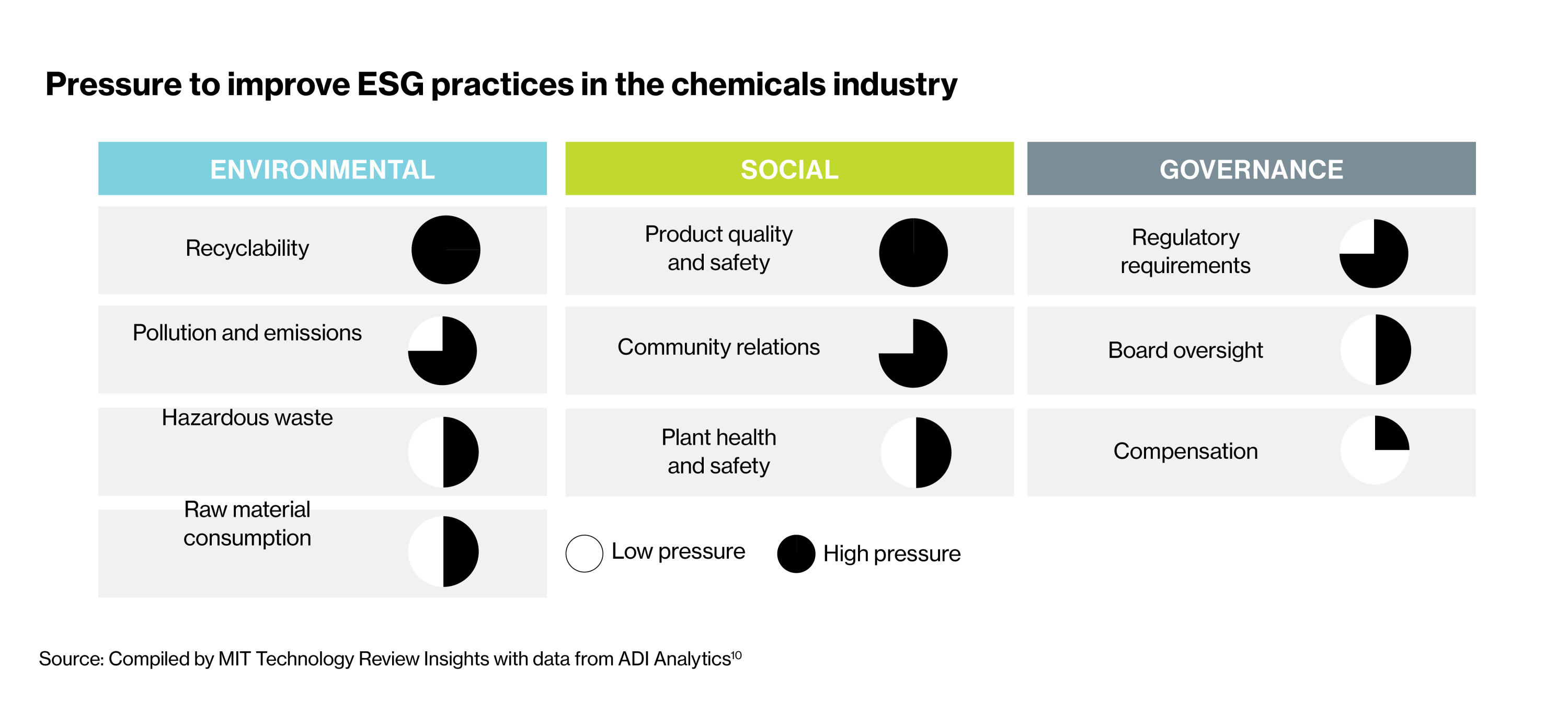Creative chemistry: Adapting to the 21st century
The chemicals industry helped build the 20th century, and is urgently adapting to the 21st. Almost all daily goods rely on output from the chemicals sector, from clothes and home insulation to fertilizer and medicine. But this energy-hungry industry needs innovation to find safer, more sustainable products. With tightening regulation and growing pressure from consumers and investors, the industry is embracing digital capabilities. Digitization is key to achieving a toxin-free environment, climate neutrality, and a circular economy.

As an industry with significant regulation and legacy IT infrastructure, chemical companies face hurdles scaling digital projects. Among key strategic practices are starting small, creating central nodes to coordinate initiatives, and investing in digital literacy.
The following are the key findings for this research:
- Demand for decarbonization and emissions reduction is accelerating. The chemicals industry is the most energy-hungry of all in terms of carbon dioxide (CO2) emissions: If growth continues at current rates without decarbonization solutions, the sector's greenhouse gas (GHG) emissions will double within 30 years. And the global push for greener industry means governments are stepping up regulation. This means tackling forever chemicals" that do not biodegrade, and reducing the scale of chemical pollution. Due to its reach into many industries, the sector is a lynchpin for sustainability. This will require partnerships and data standards. No net-zero industries are possible without a net-zero chemicals industry.

- AI, digital twins, robotics, and lab automation are accelerating research productivity, improving operational efficiency, and enhancing safety. Chemical companies increasingly see digital transformation as a way to improve safety, optimize production, and advance R&D. AI is booming in analytical chemistry and biochemistry. AI, machine learning (ML) and digitization of research are enabling high-throughput research, allowing scientists to build on past efforts efficiently, identify promising ideas, and forecast product performance. Robotics and automation reduce human error and minimize the need for human contact with hazards, and the Internet of Things (IoT) allow visibility into everything from chemical transport to environmental, social, and governance (ESG) reporting.
- Transforming to scale requires strategic oversight and coordination, a talent and capabilities plan, a focus on data standards and interoperability-and leadership. As chemical companies digitalize, some struggle to transition from pilot projects to companywide transformation. As digitalization increases the surface area for cyberattacks, security protocols must grow alongside. Companies that succeed often have a team dedicated to innovation and R&D, with organizational and strategic factors carefully mapped out. Without precise planning, digitization can result in inefficiency and confusion. High-level leadership is required to steer the effort and manage momentum.
This content was produced by Insights, the custom content arm of MIT Technology Review. It was not written by MIT Technology Review's editorial staff.